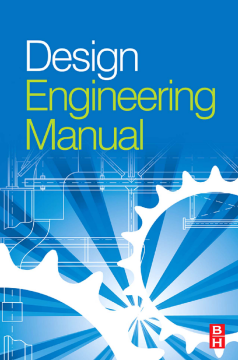
Additional Information
Book Details
Abstract
Design Engineering Manual offers a practical guide to the key principles of design engineering. It features a compilation of extracts from several books within the range of Design Engineering books in the Elsevier collection.
The book is organized into 11 sections. Beginning with a review of the processes of product development and design, the book goes on to describe systematic ways of choosing materials and processes. It details the properties of modern metallic alloys including commercial steels, cast irons, superalloys, titanium alloys, structural intermetallic compounds, and aluminum alloys. The book explains the human/system interface; procedures to assess the risks associated with job and task characteristics; and environmental factors that may be encountered at work and affect behavior. Product liability and safety rules are discussed. The final section on design techniques introduces the design process from an inventors perspective to a more formal model called total design. It also deals with the behavior of plastics that influence the application of practical and complex engineering equations and analysis in the design of products.
- Provides a single-source of critical information to the design engineer, saving time and therefore money on a particular design project
- Presents both the fundamentals and advanced topics and also the latest information in key aspects of the design process
- Examines all aspects of the design process in one concise and accessible volume
"Tooley intends Design Engineering Manual as a one-stop, concise compendium of design engineering information. The text encompasses a broad array of engineering related topics—such as design, new materials, ergonomics, reliability and maintainability, and product safety—for applications in electrical, mechanical, civil, and architectural engineering. Chapters are supported with illustrations, case studies, and diagrams. Specific sections are included on design techniques for electronics, mechanics, and plastics. The book is written for engineers, material developers, and graduate students."--Mechanical Engineering Magazine
